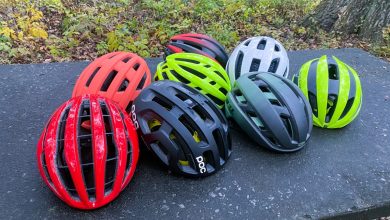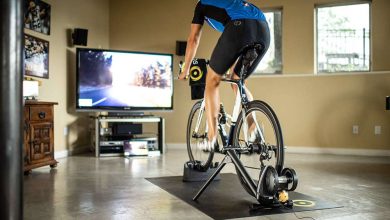A Complete Buyer’s Guide for Beginner Road Bikes
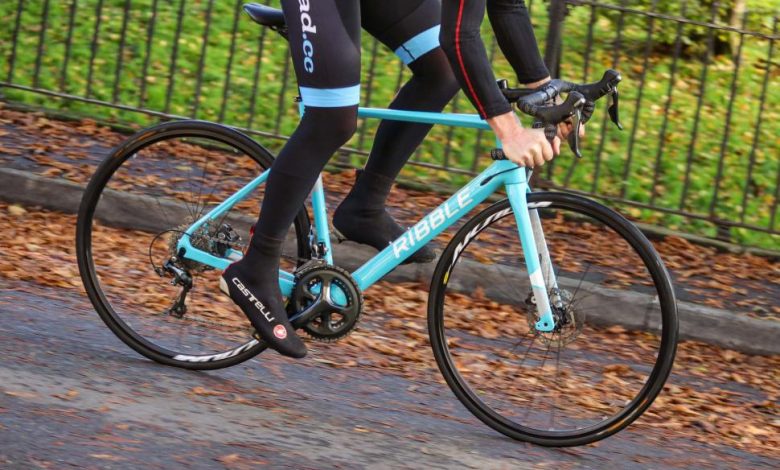
If you are a novice rider and currently looking for a road bike for beginners, you might easily get overwhelmed by various categories of bicycle types, materials, and tons of bike components. Therefore, our complete buyer’s guide for beginner road bikes features a guideline to assist you in finding the best available entry-level road bikes on the market.
Road cycling is a perfect choice for outdoor recreation. You can ride your bike for socializing with your friends while muscling up your strength through pedaling. Additionally, riding a bike would give you a relaxing time to enjoy scenic views, the experience which is impossible to access from other speeding vehicles. However, before buying the bike, you need to answer the following questions;
- What is your riding style?
- What is your budget on hand?
The proper answers to the questions above will determine what bike type is likely to suit you most. Generally, there are two types of road bikes: a road racing bike and an endurance road bike. The racing road bike, as the name described, is destined for tournament racing. The bike features an aerodynamic posture, lower torso, and more aggressive geometry for efficient maneuvering. On the other hand, a cyclist riding the endurance road bike will be in a less aerodynamic posture to yield more comfort on a long-distance road trip. This endurance bike is sometimes referred to as a sportive bike.
Moreover, the budget you are willing to pay also plays a vital role in determining the type of bicycle you buy. If you are on a tight budget, you may consider taking an entry-level road bike, which provides you the best value for the money. Let’s check out our review of the best road bikes under $500. For those who have just entered the realm of the bicycle world, a starter road bike would be an excellent option to attempt. Our buying guide for entry-level road bikes will accompany you step by step to secure the road bike that suits you most.
Bike Fitting Guideline
Bike fitting has substantially evolved during the past several decades. Formerly, cyclists used to perform self-fitting, and the procedure was quite simple. With the help of their friends, it was possible to do everything on your own. However, things have changed, and bike fitting has become more and more business-wise.
Today a parting company will keep telling you that, without a professional bike fitting, you are risk yourselves from getting injured. Is that true? Maybe or maybe not. If you are a professional cyclist who aims to win the race or to beat the time trial, getting a professional bike fitting is mandatory. On the contrary, if you are a novice rider who has just stepped in, taking the aero-optimization in a wind tunnel seems to be excessive. Ultimately, the self-fitting would be sufficient.
The Road Bike Fitting
For a newbie who is about to perform bike fitting for the first time, you need to do several self-assessing on your specific performance characteristics.
- It is essential to tune up your bike to match your riding style. It does affect your aerodynamic posture, your torso position, and, more importantly, your endurance during a long road trip.
- Determine your right frame size before purchasing a bike. Please refer to our frame size chart below.
Make sure of your cleat fitting. Placing a cleat on your bike shoes will have a tremendous effect on your performance. The perfect way to do it is to place the cleat beneath the soft upper of your shoes.
- Please note that misplacement of cleat may result in foot pain, lower back pain, and even shoulder pain during the ride.
How to measure a bike size
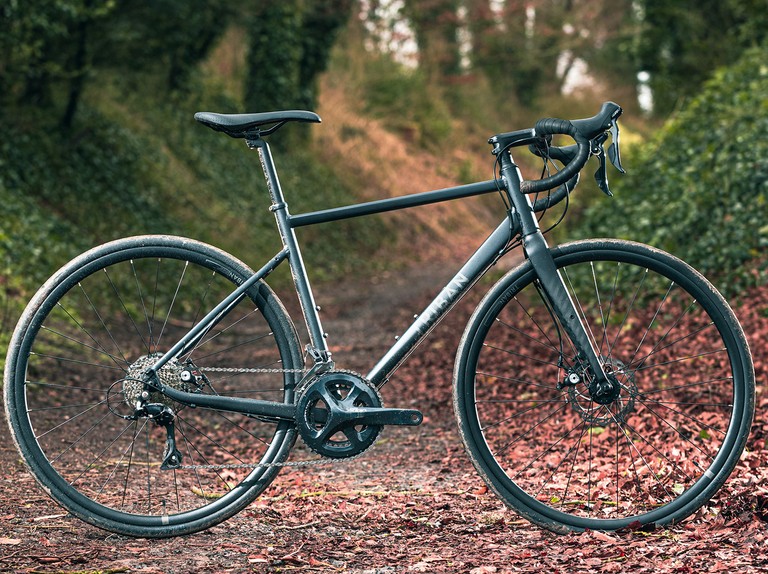
The measurement is usually performed by gauging the distance from the center of the bottom bracket to the top tube. However, bike sizing is different across bicycle manufacturers. For instance, the small size Schwinn bike is different from that of Trek bike.
Tips for online shopping
Several online shopping has been growing at a fast pace, and many cyclists are buying their new road bikes. The bike sizing chart is also comfortably available online. To determine the right bike size, you need to clarify your Standover height to match with the number of your inseam. Typically, your standover height is about 1-2” lower than your inseam.
How to measure the Standover height for bike sizing
In the case of a traditional parallel top tube, make sure that you have at least 1” of clearance from the top tube when you are straddling the bike. For a sloping top tube, a clearance of 2” or more is expected. Also, please make sure that you are wearing shoes during the measurement. Additionally, your torso should be in 90 degrees with your arm and 45 degrees with your hip.
Road bike components
Regardless of a bicycle brand you plan to buy; ultimately, you have to deal with its components. Even though there are some variations of bike components in each brand, all of them are the same. This buyer’s guide will gradually lead you to an individual component of the road bike for beginner and provides you with their characteristics and benefits.
Road Bike frame
Generally, there are four main types of frame materials available on the market; Aluminum, Titanium, carbon-fiber, and steel. Each type of frame material has unique properties and characteristics. Also, each has its advantages and disadvantages depending on riding style and budget on hand. To secure the bike frame that suits your style, you need to determine the following questions;
- How much is your budget on hand?
- Do you concern about your bicycle weight?
- How long do you plan to ride your road bike?
- Do you want to buy it at the local bike shop or the online marketplace?
Your answers to the above questions will justify what bike frame you are going to buy. Let’s go down to the details of the bike frame.
1. Steel Frame
Some cyclists consider a steel frame is old-school and obsolete, mainly, because of the weight which is denser than aluminum, titanium, and carbon-fiber. However, the steel frame offers durability and is also adaptable to cyclists’ needs. The most attractive feature of a steel frame is that it is easier to bend and shape than any other type of material, making it a popular choice for custom-made road bikes. Additionally, the steel frame is relatively easy to repair at a low cost.
Many entry-level road bikes are constructed with a steel frame as it offers more durability and affordability than titanium and carbon-fiber materials. If you are going to buy a beginner road bike with a steel frame, it is advisable to look for a sophisticated design with a less-costly TIG welding component. Furthermore, the steel frame is susceptible to rust if not being treated properly. Having an excellent paint job on a steel frame might be a good idea to protect it from oxidization.
2. Aluminum Frame
The aluminum frame is probably the most common type of road bike frame on the market. It does offer the same variances in terms of quality as the steel frame does but lighter in weight than that of the steel frame. The aluminum frame has become a standard frame material because of its high strength-to-weight ratio, lightweight, corrosion resistance, and, more importantly, mass-production capability.
A 6000 series aluminum is widely used to manufacture road bike frames of various starter bikes for beginners as it offers a precise thermal treatment after being wielded, quenched, and aged. For newbie cyclists, it is wise to look for an entry-level road bike with 6000 series aluminum frame construction. The only drawback of the aluminum frame is that the stiffness can sometimes render an unforgiving, harsh ride.
3. Carbon-fiber Frame
The carbon-fiber frame is by far the lightest bike frame available on the market. It is also best known for its lightweight, durability, and its lateral stiffness. Taking the advantage of its low density, the carbon-fiber frame can naturally absorb shock while offering better handling. Since the carbon composite is very costly to manufacture, it is only available on high-end road bike models.
4. Titanium Frame
You cannot find the entry-level road bike with titanium frame construction as this material is tough to produce. Thus, titanium is the most expensive material for a bike frame and only available on high-end models. The best feature of a titanium frame is that it is a well-balanced material for constructing a bike frame. It does combine the characteristic of aluminum and steel in a single type of content. It is as light in weight as aluminum and as stiff as steel but also half as dense.
Road Bike Gear Mechanism Explained
Gear is one of the essential bike components that help a cyclist to pedal faster or to climb the uphill with less effort. How does the gear work on a road bike? The gear mechanism will convert your pedaling force to the spinning energy of the wheels. There are three most common types of gear mechanisms on-road bicycle: the external drivetrain, the hub gear, and the gearbox. This article will cover only the external drivetrains set, which is available on most entry-level road bikes.
The Road Bike External Drivetrains Explained
The majority of road bikes, especially beginner road bikes, have incorporated the external drivetrains as their standard gear mechanism. The external drivetrains set is a combination of the shifter, cassettes, chainring, and derailleur. The shifters which are incorporated into the brake hoods will trigger the derailleur to shift the chain to a bigger or smaller sprocket. A typical road bike has 9 to 12 sprockets, which can be translated to 8-speed to 12-speed.
Meanwhile, the chainrings attaching to cranks will snap the chain shifted by the front derailleur. Most road bikes are equipped with a double chainring setup, which works in a combination of the cluster of sprockets to precisely change the gear. The standard outer large chainring size for road bikes is 53t (53 teeth), while the smaller one is 39t (39 teeth).
What is bike groupset?
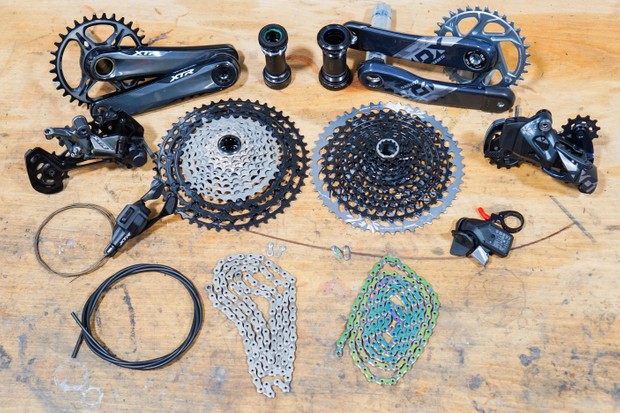
A bike groupset is the collection of mechanical or electric components working together in tandem. The groupset is usually composed of gear shifters, brake system, front and rear derailleurs, a cluster of sprockets or cassette, crankset, chainring, and bottom bracket. If you are planning to buy a new road bike, the groupset is one of the most critical components to consider after the bike frame. This buyer’s guide will cover a groupset of starter bikes for beginners.
Typically, there are 3 leading manufacturers of bike groupset on the market; Shimano, Campagnolo, and SRAM. Shimano is the market leader of groupset manufacturing. Most entry-level road bikes under $500 have incorporated a Shimano product as a standard groupset. Moreover, among Shimano groupset hierarchies, the budget-friendly Shimano Claris is equipped in most beginner road bikes under $500. It is an 8-speed system groupset combined with 2 or 3 gears at the front. If you want an affordable road bike, then look for the one with a Shimano Claris groupset as it provides an expected performance at a reasonable price.
Campagnolo is an Italian company offering a wide range of groupsets. The entry-level groupset is an 11-speed Centaur, which starts higher up the overall hierarchy than competitors. On the other hand, the American company, SRAM, is marketing the APEX, its 10-speed beginner-level groupset featuring the Wifli system. SRAM has positioned APEX in the same class of Shimano’s Tiagra groupset, which is only found in road bikes of a $500-1,000 price range.
Brake System on Road Bike
No matter how fast you can pedal your bike, you still cannot test your skill on the road without proper brake system because brakes are always synonymous with your safety. Generally, brakes perform the apparent function of slowing down your bike or even bringing it to a complete stop. The main types of brake on many entry-level road bikes are caliper brake, cantilevers brake, and V-brake. Those three types are grouped into the “RIM” brake category as they are attached to the bicycle’s wheel rims.
Caliper Brakes
Caliper brakes are probably the most common type of road bike brake system found on several cheap road bikes for beginners. They are directly mounted above the wheel and have two metal arm pivots clamping down the wheel rims to provide sufficient stopping power as well as the ease of control. They have also required a simple setup and less maintenance.
Cantilevers Brakes
Cantilevers brakes are the most common type of brake system found on the cyclocross bike. It has two separate arms mounting onto each side of the fork and seat stay. Furthermore, cantilevers brakes are more potent than standard caliper brakes and often installed on mountain bikes, which require more aggressive stopping power than road bikes.
V-Brakes
V-brakes are originally designed to be installed on mountain bikes but gradually making their way to a road bike. Today a handful of road bikes employ V-brakes as their standard brake system. V-brakes are sometimes called linear-pull or direct-pull brakes as they have initially evolved from a traditional cantilevers’ brakes. Additionally, V-brakes are often found on road bicycles equipped with Shimano group-set. These brakes offer a mighty stopping power and are capable of guarding muddy splash during cruising on wet condition roads.
Disc Brakes
Unlike traditional RIM brakes, disc brakes are mounted to a compatible wheel hub and bike frame/fork. Disc brakes are by far the most powerful brake system available for road bikes.
There are two sub-categories of disc brakes: cable-pulled disc brakes and hydraulic disc brakes. Cable-pulled disc brakes, as the name suggested, operate by pulling the cable attached to the brake lever on the handlebars. On the contrary, hydraulic disc brakes use the pressure from the mineral oil in the housing to move brake pads. The most significant advantage of disc brakes is that they provide substantial stopping power in dirty road conditions and are also resistant to heat. Disc brakes are very common in higher model road bikes but rarely to be found on cheap entry-level bikes.
Wheels and Tires
Road bikes are typically equipped with 700C wheel rims and narrow surface tires. Of all the components, road bike rims and tires are the only parts of your bike that have direct contact with the road surface. The standard 700C wheels let you cruise the road with impressive speed and also allow you to climb up a stiff hill road with less effort. Although carbon-fiber wheels and aero-wheels are excellent choices as they will help you cut through the air better, they are too pricey to buy.
Ultimately, your riding style will determine what type of bike wheels you should buy. If you are an everyday cyclist who prefers riding to commute, lightweight wheel rims are your perfect choice. On the contrast, aerodynamic wheels are for riders who aim to be as fast as possible.
Generally, bike tires can be classified into three different categories: clincher, tubular, and tubeless. The most common type of tires on road bikes is clincher tires. Most budget road bikes for beginners feature clincher tires as their standard tires. By the way, you may replace the original tires with tubular tires that offer enhanced rolling resistance and lightweight. Tubeless tires seem to be out of the question because they are not in the affordable price range.
Handlebars
Three key touch-points connect you to your bike and handlebars are one of them. People often overlook the essentials of handlebars while focusing more on pedal and saddle. Please note that mass-production road bikes usually come with the average shoulder wide, which may not be entirely fit you. Wider handlebars may subsequently damage your neck and arms, while narrow handlebars will subdue the aerodynamic effect. It may be a good idea to ask your local bike shop to tweak the handlebars to fit your shoulder wide. Additionally, most levers are adjustable, so do it to suit you most.
Pedals
Bike pedals are one of 3 key touch-points connecting you and your bike. Again, your riding style plays an integral part in the type of pedal you are going to use.
There are two significant types of bike pedals: clipless pedals and flat pedals. Clipless pedals are the perfect choice for road bike riders who aim for more speed, control, and efficiency. As your shoe cleats completely lock into place, you will be able to achieve a maximum transfer of power to pedal strokes. On the other hand, if you are concern more about security and comfort, flat pedals are your pedal option as they allow you to put your foot down to the ground at any time. Flat or platform pedals are also standard for commuter bikes dealing with massive traffics in an urban area.
Saddle
New cyclists often have an issue with uncomfortable bike saddle, which leads them to injuries such as back pain. Therefore, getting the right saddle will help you to enjoy a long bike trip without unbearable discomfort. For road cycling, a saddle should be long and narrow with minimum padding to facilitate the transfer of power while pedaling. In this case, the performance saddle is preferred over the cushioning seat.
Our Tips for Women’s Specific-Road Bikes
Since female cyclists’ body has different geometry from male counterpart, in this case, women tend to have longer legs in their proportion to their torso than men. Thus, you can find that many women’s bicycles are likely to have a shorter top tube to move saddle close to handlebars. Additionally, a female-specific road bike is built to provide maximum comfort to women cyclists by incorporating a relatively steep seat angle, a more relaxed head tube angle.
Women’s road bikes usually have a narrower handlebar to match with women’s narrow shoulders systematically. Furthermore, you may find that women’s saddle road bike tends to be shorter and wider than standard saddle because it is intentionally designed to support the sit bones of the pelvis. Anyway, female cyclists have options to choose between women’s specific road bike or Unisex road bike. Of course, if budget is not your problem, it is advisable to go for female road bikes. However, if you are tight on budget, a unisex road bike is not a wrong choice at all.

